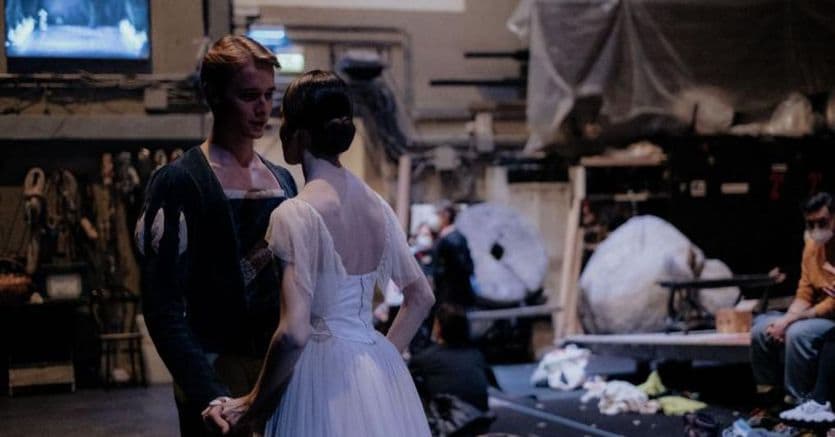Outside day. Piazza della Scala in full sun, with the warm colors of late summer. From via Manzoni, from the metro in Piazza Duomo, from the Galleria arrive in via Filodrammatici – some with a trolley full of shoes, some with the naturally elegant step of a danseur noble – the beautiful dancers of the Teatro Ballet.
After seven months of lock down, we return to the scene; the new season is starting. Thus begins the docuseries Corps of Ball – L’avventura di Giselle alla Scala, a project created by Panamafilm with La Scala and Intesa San Paolo, which in twelve exclusive episodes on Raiplay from 30 April tells of the last months lived intensely by the artists of the Milanese company, overwhelmed by the events of the pandemic which, added to the natural ones of theatrical life (rehearsals, injuries, daily work, but also the handover between the conductors Olivieri and Legris) put the ensemble to a severe test.
Loading…
Season still streaming
The facts are known: at the moment the whole 20/21 season of the corps de ballet is still streaming, with programs inevitably adapted for emergencies (the next one is announced for May 15, again on the social and web pages of La Scala). Credit to the merit of the authors, however, was able to find a retrospective “dramaturgical” red thread in the unraveling of the episodes to create expectations, suspense, curiosity of the television audience: will Martina Arduino be able to dance her first Giselle? Will the company be able to go on stage in front of the public with a ballet in the evening – after months of forced inactivity, a sign of a long-awaited recovery?
Carla Fracci
But beyond the story telling (which culminates with the return of Carla Fracci to “her” theater, called by the new director Manuel Legris to supervise the staging of the ballet in which she has always been an incomparable reference), the series has other reasons of interest precisely in revealing the serious and complex everyday life with which the dance artists of a great institution are confronted.
And the gaze, fortunately held back by the rhetoric that generally accompanies the story of this specific artistic environment, allows the artists themselves to reveal themselves not so much in words, but above all in their daily activities and in the meeting with colleagues, with the other employees of the theater – the physiotherapist, the hairdresser, the stage manager – who make you feel the rich vitality behind the artistic act, the result of the collective work of the whole theatrical organism. Thus it is touching, as much as the long arabesques in Desirè’s (exhausting) solo, the fatigued climb to Claudio Coviello’s dressing room, at the end of a performance that has just been acclaimed by the public. Or Timofej Andrijashenko’s shirt drenched in sweat and dirty with make-up, hugged to his Nicoletta Manni after the performance of Petit’s Carmen duet, in which physical contacts so sensual to the eye of the spectator remain strongly impacted on the costume of the dancers.
